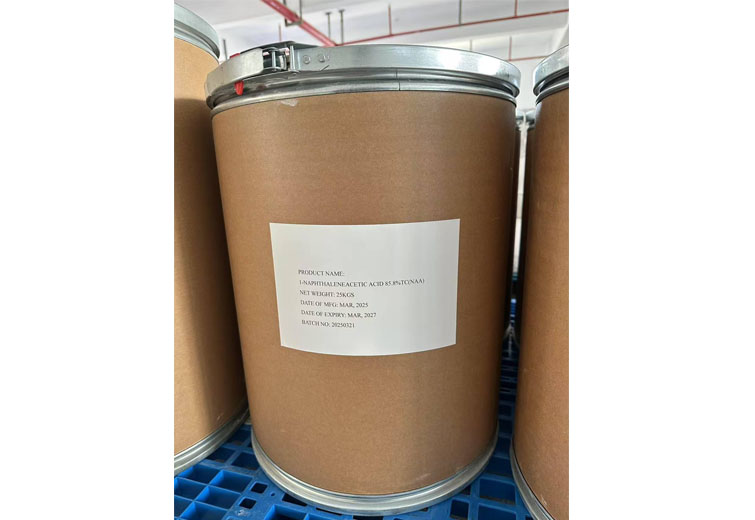
1-Naphthaleneacetic acid
1. Usage: Used as a stimulant for plant growth in agriculture, it has the function characteristics and physiological functions of the endogenous auxin indole acetic acid, which can promote the metabolism and photosynthesis of crops, such as promoting cell division and expansion, inducing the formation of unstable roots, increasing fruit setting, preventing fruit drop, changing the ratio of male and female flowers, etc.It enters the plant through the tender epidermis of leaves, branches, seeds and so on, and is transported to the effective parts with the flow of nutrients.At higher concentration, it has the effect of inhibiting growth.It can increase the yield by soaking rice seedling and wheat seed.It can also prevent fruit trees and cotton from falling off, promote all kinds of plant cutting root, flowering, improve the germination rate, so that crops are premature and productive.Prevent falling flowers and seedless fruits.
2.Customerized packing label
3.Professional registration GLP,ICAMA,LOA etc.
4.FAO standard
1-Naphthaleneacetic Acid (NAA) Customer Reviews
1-Naphthaleneacetic Acid (NAA) FAQs
-
80%High PurityEnsure the reliability of each product.
-
58%Fast-Acting FormulaQuickly provide visible effects
-
What are the primary agricultural uses of NAA?
What are the primary agricultural uses of NAA?
NAA serves as a fruit thinner in apples/pears (10-20 ppm), prevents preharvest drop (20-50 ppm), and stimulates rooting in difficult-to-propagate species. It's also used for sprout inhibition in potato storage and to increase fiber length in flax.
-
How does NAA compare to other auxins?
How does NAA compare to other auxins?
More stable than IAA but more phytotoxic than IBA at comparable doses. Its intermediate mobility makes it ideal for localized effects - perfect for fruit abscission zone targeting without excessive whole-plant growth disruption.
-
What factors influence fruit thinning efficacy?
What factors influence fruit thinning efficacy?
Crop load (heavier thinning needed at high fruit set), variety sensitivity (Red Delicious more responsive than Fuji), and weather (sunny days post-application enhance activity). Temperature >24°C increases absorption but may risk overthinning.
-
How does NAA prevent fruit drop?
How does NAA prevent fruit drop?
Applied 1-3 weeks preharvest, it maintains auxin levels in fruit stems, delaying abscission zone formation. Combined with calcium sprays, reduces both drop and storage disorders by 40-60% in apples.
-
What special considerations apply to rooting applications?
What special considerations apply to rooting applications?
Use lower concentrations (500-2000 ppm) than IBA due to higher phytotoxicity. Best for semi-hardwood cuttings of moderate difficulty. Often combined with IBA (2:1 IBA:NAA) for synergistic effects on stubborn species.





